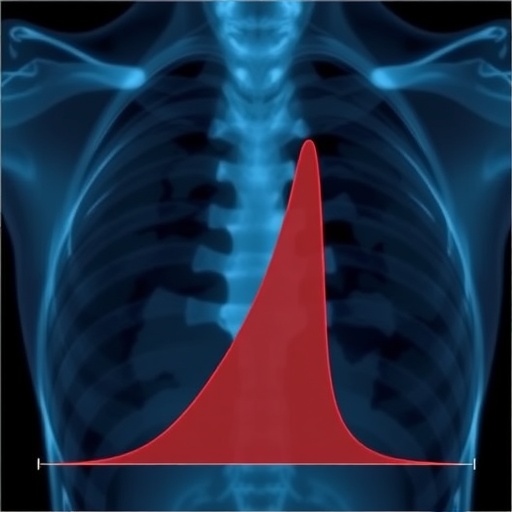Cervical cancer remains a significant threat to women’s health worldwide, ranking as the third most common malignancy among women. Brazil’s Mato Grosso region has been particularly impacted, with cervical cancer emerging as the second most prevalent neoplasm in the area as of 2020. In light of this challenge, a recent study has sought to enhance our understanding of cervical cancer prognosis and survival through robust statistical models. This study is forged from a collaborative effort by researchers including Xavier, S.P., Galvão, N.D., and das Neves, M.A.B. Among its remarkable findings is the development of a nomogram designed to predict the long-term prognosis of cervical cancer patients, making it a pivotal step in personalized medical approaches.
The study utilized comprehensive data from the Mortality Information System (SIM) and the Population-Based Cancer Registry (RCBP) for patients diagnosed with cervical cancer between 2001 and 2018. Researchers aimed to analyze the overall survival rates of these patients while identifying key prognostic factors. Through meticulous data integration and analysis, they sought to construct a predictive model that would provide clinicians with a powerful tool to navigate the complex landscape of cervical cancer treatment and long-term patient management.
To determine survival outcomes, the research team employed the Kaplan-Meier method, utilizing the Log-rank test to analyze group differences. These statistical approaches are fundamental in oncology research, enabling researchers to quantify survival rates and assess the impact of various prognostic factors such as age, histological type, and cancer stage on patient outcomes. The findings elucidated in this study offer critical insights into how different variables influence overall survival in cervical cancer patients.
Throughout the research, a key focus was placed on the development of a nomogram—an intuitive graphical representation of statistical predictions. This nomogram is particularly noteworthy as it forecasts overall survival rates at various intervals: 1, 3, 5, and even 10 years post-diagnosis. The ability to predict long-term survival allows healthcare providers to craft personalized treatment plans that can be more effectively tailored to an individual patient’s circumstances and prognosis.
One of the striking results of the study is the high overall survival rates observed among cervical cancer patients in Mato Grosso. The median follow-up period was an impressive 12 years, with survival rates recorded at 95.4%, 91.3%, 89.9%, and 88.3% at 1, 3, 5, and 10 years, respectively. These statistics are not only hopeful but also underscore the importance of timely intervention and access to healthcare services in improving patient outcomes.
Additionally, the study’s robust analysis revealed that age, histological type, and disease stage are independent prognostic factors for overall survival. Understanding how these variables interact and affect survival rates is vital for oncologists and healthcare professionals. Consequently, this knowledge aids in identifying which patients may require more aggressive treatment strategies or follow-up care.
Validation of the nomogram’s accuracy is another notable accomplishment of the study. With a concordance index (C-index) of 0.869, this model demonstrates good discrimination in predicting outcomes. The area under the receiver operating characteristic (ROC) curve corroborated these findings, yielding scores of 0.910, 0.897, 0.895, and 0.884 for survival predictions at 1, 3, 5, and 10 years, respectively. Such metrics solidify the reliability of the nomogram, establishing it as a credible tool for clinical use.
In conclusion, the development of this nomogram represents a significant advancement in the management of cervical cancer. It is designed not only to predict overall survival rates but also to inform clinical decisions regarding treatment and follow-up care for cervical cancer patients. This study provides compelling evidence that disease staging and histopathological type are the most critical determinants of prognosis, paving the way for targeted therapeutic strategies.
As the healthcare landscape evolves, especially in oncology, the importance of data-driven tools like this nomogram cannot be overstated. It empowers healthcare providers to create personalized treatment plans based on individual patient profiles, ultimately leading to improved outcomes and quality of life for those battling cervical cancer in Brazil and beyond.
The significance of this research extends beyond the data; it offers hope and direction in the ongoing fight against cervical cancer. As public health initiatives continue to address this pressing concern, studies like these are crucial in shaping the future of cancer care.
The implications of the research encapsulate a broader narrative of advancing healthcare through evidence-based practices. By harnessing robust data and employing advanced statistical modeling, clinicians are better positioned to navigate the complexities of cervical cancer treatment, thus enhancing their ability to save lives.
This research underscores the critical need for continued investigation into cancer prognostication and personalized treatment strategies. As more studies like this emerge, the ultimate goal remains clear: to foster a world where cervical cancer can be effectively managed, and the lives of those affected can be significantly improved.
Subject of Research: Long-term prognosis prediction for cervical cancer patients.
Article Title: Nomogram model for predicting the long-term prognosis of cervical cancer patients: a population-based study in Mato Grosso, Brazil.
Article References:
Xavier, S.P., Galvão, N.D., das Neves, M.A.B. et al. Nomogram model for predicting the long-term prognosis of cervical cancer patients: a population-based study in Mato Grosso, Brazil. BMC Cancer 25, 684 (2025). https://doi.org/10.1186/s12885-025-14056-5
Image Credits: Scienmag.com
DOI: https://doi.org/10.1186/s12885-025-14056-5
Keywords: Cervical cancer, prognosis, overall survival, nomogram, predictive modeling, Brazil.




